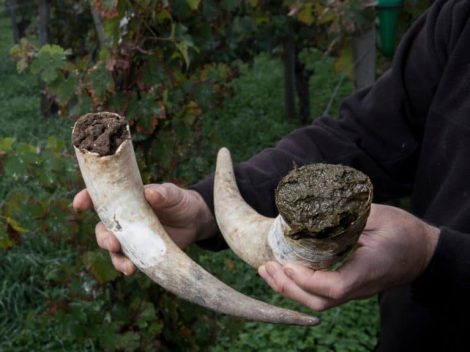Thick damask red silk curtains cover the shop window on Via del Piè di Marmo, number 22. They’re not there to hide any secrets, but rather to shield the chocolates from the warm sunlight. As the sun moves across the sky, the curtains are adjusted, revealing to passers-by a sight so glorious that Bulgari’s jewels pale in comparison. At the corner, it’s easy to walk past the discreet entrance. The shop is accessed through a wooden door with glass panes, and as it opens, a little bell jingles. Crossing the threshold, enveloped in the intoxicating scent of chocolate, you step into a time machine. The room is a welcoming fin-de-siècle salon, with red damask armchairs, round tables, an antique cash register, cherry-coloured walls, and shelves and display cases brimming with stunning creations. Except for jars of homemade jam, sweets, and the most divine marrons glacés in the universe, everything here is chocolate-based. From carnival masks to red hearts for Valentine’s Day, Cinderella’s slippers, April Fools’ fish and smaller ones for Saint Andrew, and ornaments for Christmas trees (a pipe, a flask, a violin, and so on)... and then the pralines. There are around eighty varieties, produced in small batches, with no preservatives, semi-finished products, or additives. Every August, production stops, and the shop closes for an entire month—too hot.
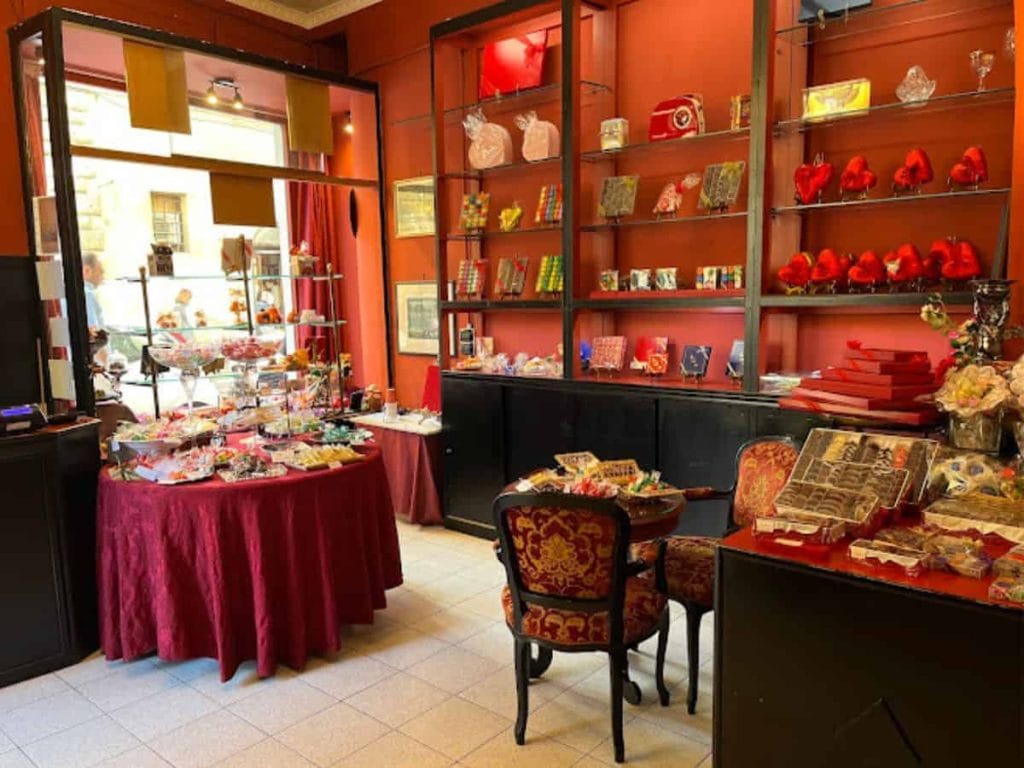
Welcome to the ancient chocolate shop Moriondo & Gariglio
Owner Piera Minelli, behind the counter for nearly 60 years, and her son Attilio Proietti, maître chocolatier, recount the history of their family business. In 1850, Agostino Moriondo opened a chocolate factory in Turin. As a supplier to the royal House of Savoy, the business quickly thrived and expanded, requiring a larger workshop. Agostino asked his uncle for 12,000 lire to fund the expansion. The uncle agreed on the condition of forming a partnership with his son, Francesco Gariglio. Thus, in 1868, the cousins Moriondo and Gariglio began their venture. Then, spurred by the Unification of Italy, a Roman branch of the Turin factory was born. After the breach of Porta Pia in 1870, the last royals moved to Rome, and Moriondo and Gariglio followed. The two cousins appointed Gaston Latour to manage the Roman chocolate shop.
In 1890, Carlo Enrico Cuniberti, a renowned chocolatier from Turin, took over the management of the Roman chocolate shop. Cuniberti invented new recipes, still in use today, creating complex flavours through simplicity. Among these was the recipe for the "stelle oro" (gold stars), initially intended only for the Christmas season, which the master wrapped in gold foil. These pralines resemble the famous Baci Perugina of today. A coincidence? “Not exactly,” Minelli hints. “Perugina had opened a shop on Via Condotti, and their chocolatiers often came to our shop on Via del Corso to buy products. They loved the stelle oro and copied them. At first, they weren’t called Baci but ‘cazzotti’ (punches).”
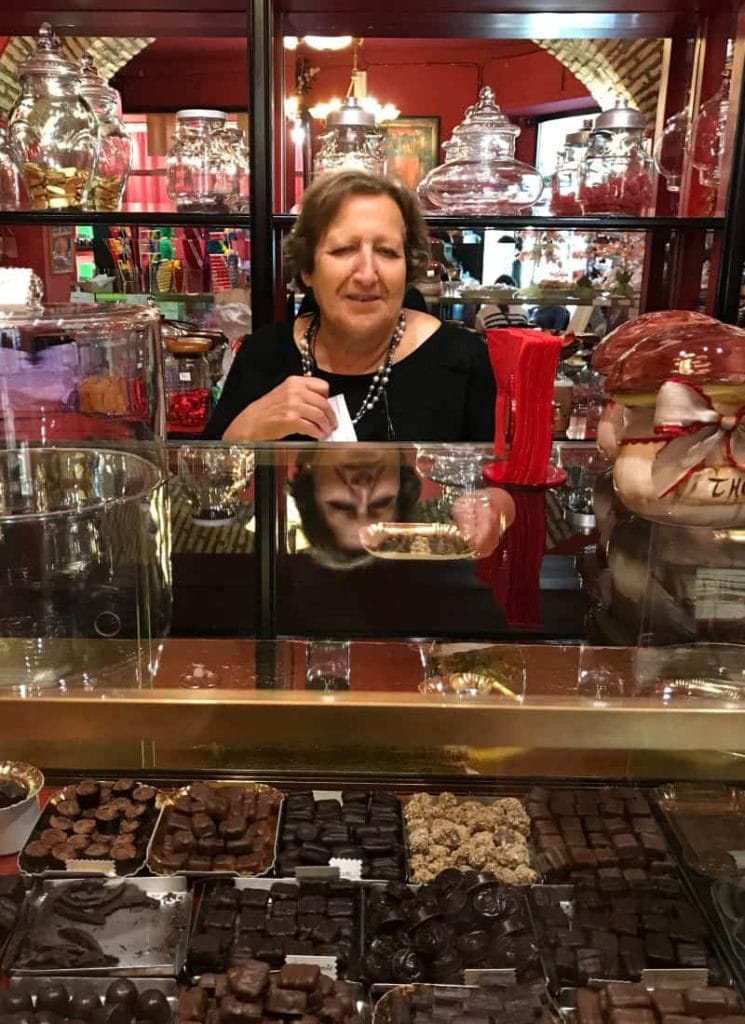
The Proietti Family
The “modern” history of Moriondo & Gariglio began in 1943, when 12-year-old Marcello Proietti started working at the chocolate factory as an apprentice. Master chocolatier Cuniberti, who had no children, became a father figure to Proietti, teaching him his craft, sharing his most secret recipes, and entrusting him with the business’s management. In 1965, 16-year-old Piera Minelli began working at the factory, and years later married Marcello. Cuniberti’s recipes, which avoided additives, used only two or three ingredients per praline flavour. Today, Attilio Proietti, the only son of Piera and Marcello, is the third generation of master chocolatiers, keeping the ancient secrets of the Turin maestro alive.
“When in the late 1970s the elderly woman renting us the premises on Via del Corso decided to sell,” Minelli recalls, “we were forced to leave. My husband and I continued making chocolate at home; our son was only 7 or 8 months old.” A loyal customer, Countess Isabella Colonna, “who hosted her bridge friends every Thursday, always ordered chocolates from us. When she learned of our struggles, she said, ‘Piera, my salon needs your chocolates every week; I can’t lose you. Go to my administrator and find yourself a shop.’ Thanks to the countess, we were given a tiny space on Via della Pilotta under the garden of the Palazzo, the only one available. It leaked and was a hole, but there we could start again. Since 1992, we’ve been here on Via Piè di Marmo.”
Rome’s historic centre is full of chocolate shops, but Minelli and Proietti aren’t afraid of competition. “Many have come asking me to sell or partner up, some even threatening that I’d either be absorbed or fail because of their expansions. I always reply, ‘I’ll think about it.’ Many of these new ventures have since closed; we, on the other hand...”
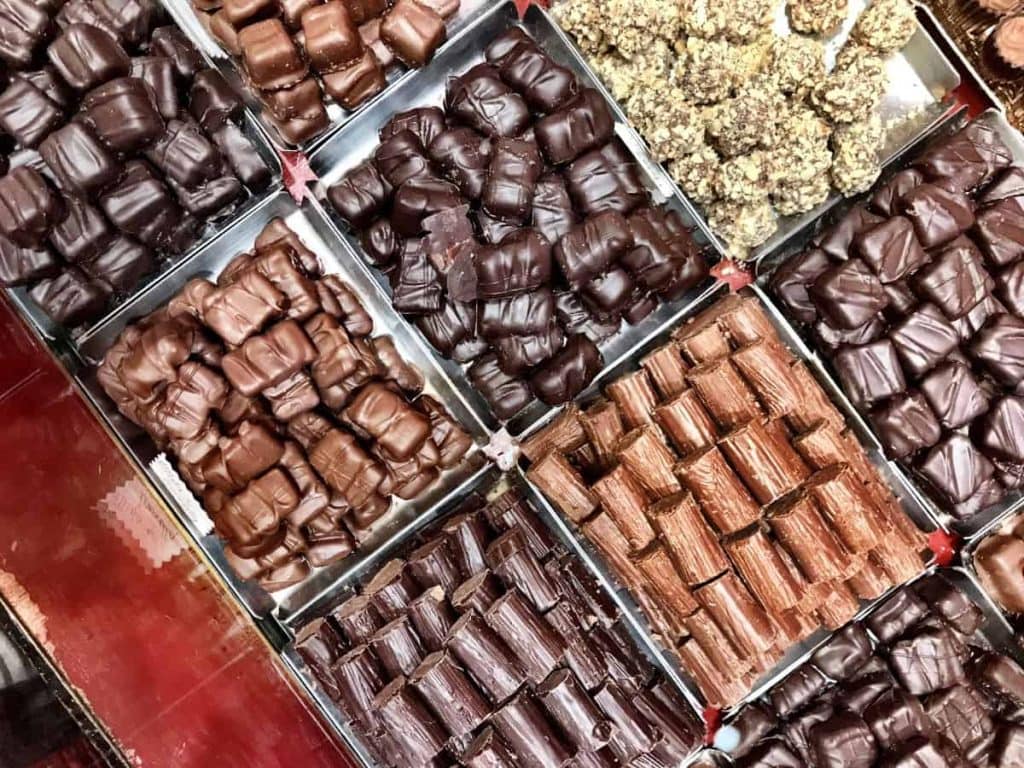
What to buy at the chocolatier
Behind the counter, where two or three saleswomen in red uniforms and white caps are always busy, lies the workshop that daily produces an array of delights. The chocolate used is a blend of their own cocoa, sourced from Central and South America. Among the most beloved chocolates and pralines are "l’americano" with a peanut butter heart, toasted almonds and hazelnuts coated in dark or milk chocolate, kri kri (gianduja and rum balls covered in hazelnut granules), chocolate-covered cape gooseberries with their leaves still attached, lemon peels coated in dark chocolate, classic gianduiotti, Menta Milano chocolates (dark discs with mint crystals and a stamped logo). There’s also croccante, flat squares of brittle coated in a thin layer of milk or dark chocolate. In addition, there are bars and plain chocolates with varying cocoa percentages. For holidays, they produce Easter eggs of all sizes, into which personalised surprises can be placed. As a child, every Easter, I went with my grandmother to the shop on Via del Corso, and she would note in her little notebook: the green egg contains a surprise for Emi, the yellow one for the grandparents, and the pink one for you—but don’t peek or you’ll ruin the surprise. Inside the egg, I’d find a mosaic jewel, a small keychain, a tortoiseshell comb, while the adults might get a silver cigarette case, a fountain pen, or a more significant trinket.
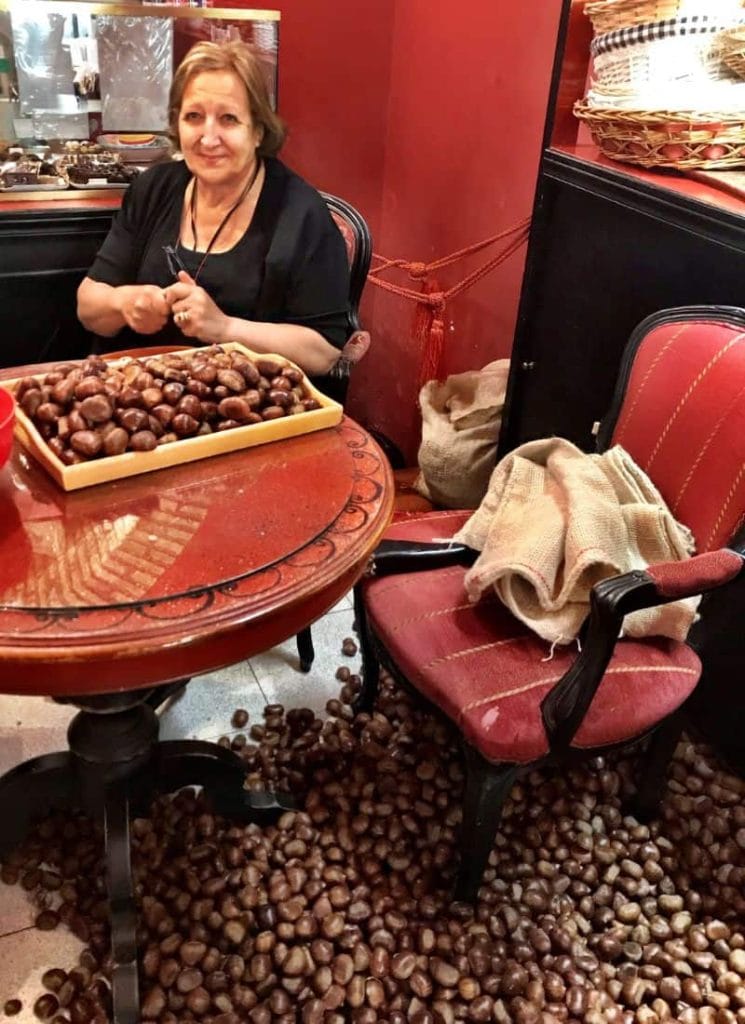
Early October is the most magical time, as it marks the start of the marrons glacés production, a highlight of Moriondo & Gariglio’s artisanal offerings. On the floor around the main table by the counter, you can often find Piera at work, surrounded by a carpet of large chestnuts brought specially from Piedmont. Huge boxes hold the peeled chestnuts, which are then boiled and macerated in magical syrup before being placed into elegant glass jars. There are also fondant candies, fruit jellies, and Lacrime d’Amore—tiny sugar-coated spheres with liquid centres, found only here.
The chocolates of Moriondo & Gariglio
Thanks to my grandmother Titta and our expeditions for Easter eggs and Christmas nougat, I have a deep fondness for this chocolatier. Now the tradition continues with my son: every year, we visit Moriondo & Gariglio on the Feast of the Immaculate Conception for a cup of hot chocolate, served thick and steaming from a grand samovar. Whenever I visit, I enjoy chatting with the sweet Signora Piera. For years, I insisted that their online presence needed to be more assertive, and she always smiled, repeating her “I’ll think about it.” Undeterred, I’d continue urging, “You must open a Facebook profile! You need online publicity!” During one of my rants about the importance of the internet, the phone rang, and she gestured for me to wait while she answered. She opened a large ledger and noted a lengthy order. “Yes, Signora Fendi, please go ahead.” Every week, the Roman fashion house places a chocolate order for its employees. “Piera, about what I was saying regarding Facebook? Never mind.”
Piera’s son, Attilio Proietti, was born and raised in chocolate. “He used to sleep in the workshop, with his cradle balanced on two chairs,” his mother smiles from behind the counter. When he and his wife Silvia welcomed their first, then second child a few years ago, all of Rome breathed a sigh of relief: the two young Proiettis—raised in those magical surroundings, cradled by the scent of cocoa—will be the new generation to carry on this ancient and delicious family tradition.
Moriondo & Gariglio – Via Pié di Marmo, 21/22 Roma – Tel. +39 06 699 0856

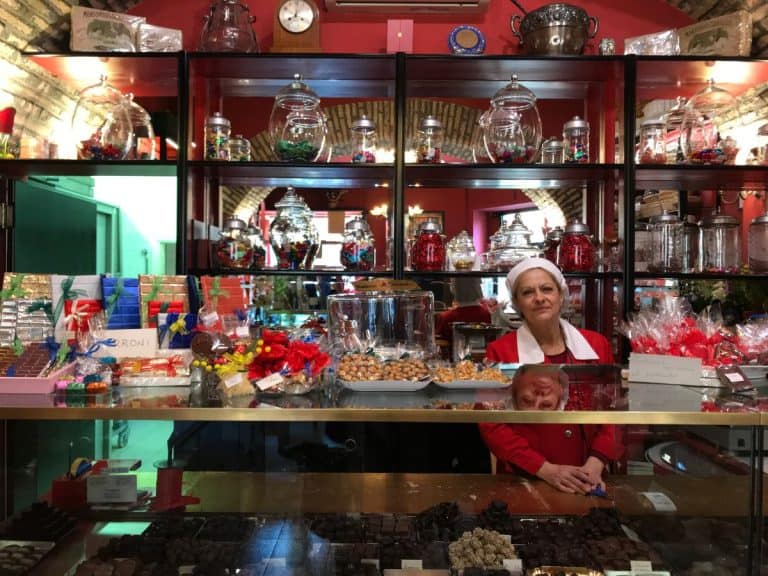
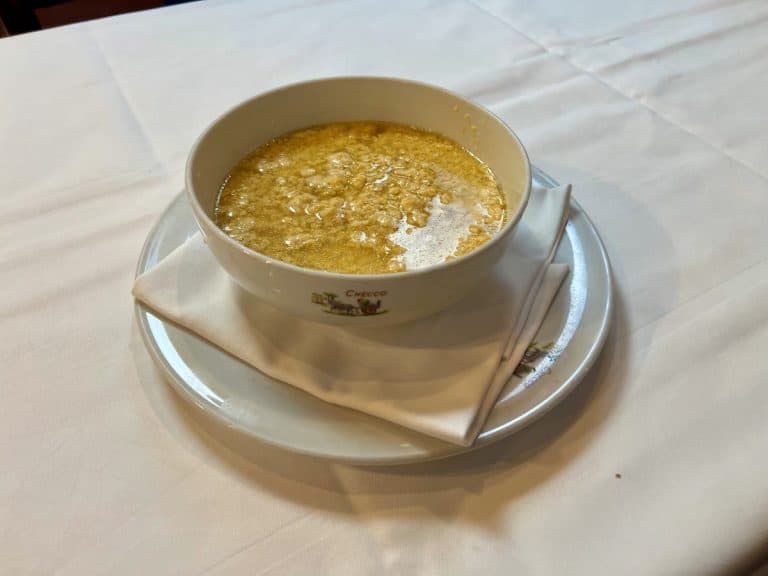 God Bless those who don’t forego Stracciatella on the evening of December 25th. Here’s the recipe from a renowned Roman trattoria
God Bless those who don’t forego Stracciatella on the evening of December 25th. Here’s the recipe from a renowned Roman trattoria Hidden in an old district of Perugia lies one of Italy's cosiest wine bars
Hidden in an old district of Perugia lies one of Italy's cosiest wine bars Christmas Eve dinner and Christmas Day lunch: festive traditions rooted in Solstice feasts
Christmas Eve dinner and Christmas Day lunch: festive traditions rooted in Solstice feasts George Washington had his secret recipe: here’s how Eggnog made a comeback in Europe
George Washington had his secret recipe: here’s how Eggnog made a comeback in Europe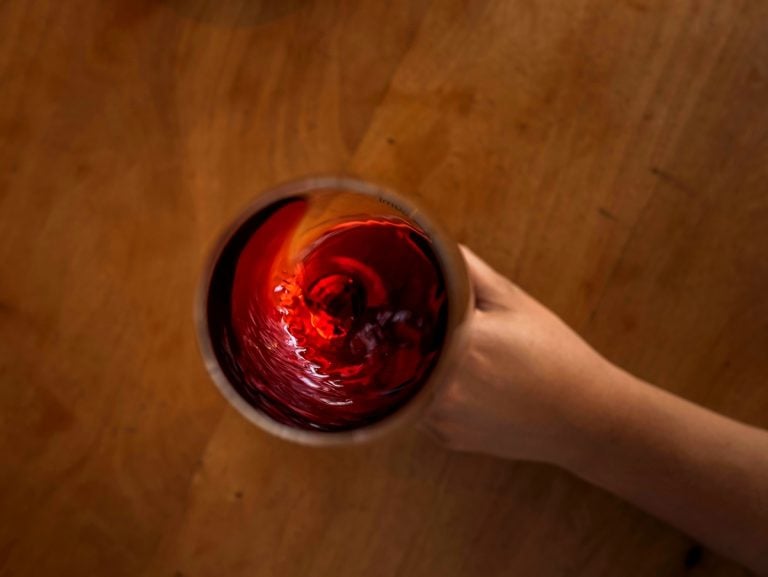 Historical breakthrough: Italy will also produce dealcoholised wines. Lollobrigida signs the decree
Historical breakthrough: Italy will also produce dealcoholised wines. Lollobrigida signs the decree




